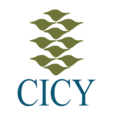Por favor, use este identificador para citar o enlazar este ítem:
http://cicy.repositorioinstitucional.mx/jspui/handle/1003/3340| Systematic study of the N concentration effects on metal-free ORR electrocatalysts derived from corncob: Less is more | |
| JUAN CARLOS MARTINEZ LOYOLA Miguel Carrasco Miguel Carrasco Cordero Ivonne Liliana Alonso Lemus FRANCISCO JAVIER RODRIGUEZ VARELA JOSE PASCUAL BARTOLO PEREZ Beatriz Escobar Morales Yadira Vega_Cantu Fernando Rodriguez-Macias | |
| Acceso Abierto | |
| Atribución-NoComercial-SinDerivadas | |
| 10.1016/j.elecom.2024.107792 | |
| CORNCOB BIOMASS WASTE METAL-FREE POROUS CARBONS UREA DOPING OXYGEN REDUCTION REACTION | |
| We report nitrogen-doped biomass-derived porous carbon materials with great performance for the Oxygen Reduction Reaction (ORR) in alkaline media. The level of nitrogen doping in a simple pyrolysis of corncob (CC) was varied systematically, a 1:1 CC:urea ratio (CC1U) gave the best performance in terms of onset potential (Eonset = 0.97 V vs. RHE), maximum current density (jmax = -3.22 mA cm−2), hydroperoxide ion yield (%HO2– = 1.18 % at 0.5 V), and electron transfer number (n = 3.86 at 0.5 V). Unexpectedly, for higher CC:urea ratios the doping decreases, instead of plateauing, with lower concentration of C-N sites and more sp2 sites as determined by XPS, as well as lower specific surface area (SSA), while increasing both porosity and carbon (0 0 2) interplanar distance (d(0 0 2)). These materials should be durable and robust, since their performance actually improved after accelerated degradation tests. This study proves that renewable “waste” can be upconverted into metal-free electrocatalysts for electrochemical energy conversion technologies and emphasizes the need for studying and controlling doping levels to enhance performance. © 2024 The Authors | |
| 2024 | |
| Artículo | |
| Electrochemistry Communications. 166(), 2024, 107792. | |
| Inglés | |
| ENERGÍA | |
| Versión publicada | |
| publishedVersion - Versión publicada | |
| Aparece en las colecciones: | Artículos de Investigación Arbitrados |
Cargar archivos:
| Fichero | Tamaño | Formato | |
|---|---|---|---|
| 2024_J.C._Martinez_Loyola.pdf | 9.47 MB | Adobe PDF | Visualizar/Abrir |
